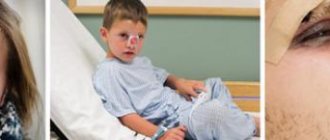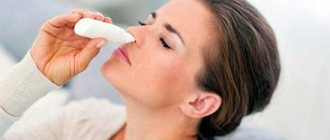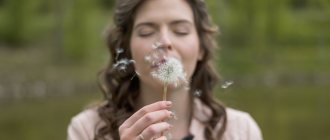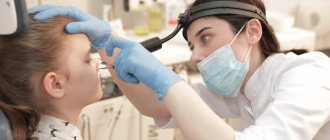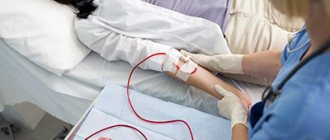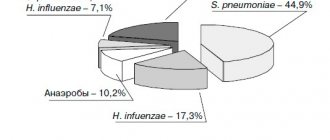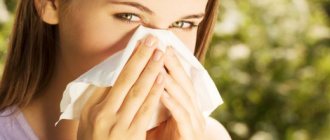The procedure for rinsing the nasal cavity remains an integral part of the complex of measures for the treatment of sinusitis to this day. This method allows you to cleanse the cavity and sinuses of mucus, the excess of which can lead to the formation of pus.
Proper rinsing of the sinuses not only ensures their cleansing, but also restores the ability to independently remove mucous masses, avoiding their accumulation.
The following solutions can be used: pure water, saline solutions, herbal decoctions, aloe juice, as well as special solutions sold in pharmacies (“Aquamaris”, “Dolphin”, “Aqualor”).
Why is rinsing prescribed?
Nasal rinsing is a procedure that maintains the health of the respiratory system. It should be carried out regularly, especially in the cold season, when the body is susceptible to the development of colds. Also, regular aspiration helps maintain the condition of the channels during the operation of heating devices, which greatly dry out the air in the room.
Washing is necessary for a number of reasons:
- to moisturize the mucous membrane so that it does not become thinner under the influence of dry air masses;
- to relieve swelling, remove mucus;
- to ease breathing during ARVI, rhinitis, sinusitis, sinusitis;
- to relieve symptoms of allergic rhinitis. Aspiration allows you to eliminate pollen and other allergens from the mucous membrane.
Rinsing the nose prevents the development of inflammatory processes. It stimulates the healing of the upper respiratory tract.
Important! Doctors recommend regular washing during the cold season - this is a good prevention of colds.
1.What is purulent sinusitis?
Purulent sinusitis
is an inflammatory disease of the maxillary sinuses located in the upper jaw. Most often, sinusitis is complicated by respiratory infections of viral and bacteriological etiology. There are also cases where sinusitis is complicated by allergic rhinitis.
The symptoms of this disease are associated with swelling and congestion of the maxillary sinuses.
: runny nose, coughing and sneezing, pain in the nose and forehead, headaches around the eyes and nose, fatigue and distraction, bursting pain in the jaw. Sinusitis is dangerous due to its complications. Due to stagnation of purulent mucous masses, the process can spread deeper and affect the ocular and intracranial areas. The disease can be unilateral or bilateral.
Types of washing
Nasal aspiration is a procedure, the importance and effectiveness of which has been proven in the treatises of Hindu and Ayurveda. It is also carried out in yoga practices to facilitate breathing. Doctors often prescribe it for children - the rinsing is well tolerated, does not cause side effects and speeds up the recovery process.
For aspiration, the doctor chooses a special saline solution.
- Isotonic, concentration – 0.9%.
- Hypertonic with a salt content of 1.5-3%.
- Hypotonic, salt concentration below 0.9%, is used extremely rarely in the practice of otolaryngologists.
Our ENT doctors use the following methods for rinsing the sinuses.
1. According to Proetz, or the “cuckoo” method
It got its name due to the fact that during the administration of the solution the patient must quickly say “ku-ku” so that the saline solution does not enter the nasopharynx. During the procedure, a warm solution with the addition of antiseptic agents is injected into one nostril, and pathological mucus is pumped out of the second nostril using suction.
Important! If the nose is very stuffy, the doctor must perform anemia before starting the procedure. To do this, vasoconstrictor drops are instilled into the nostrils, which reduce the swelling much less.
2. Zonderman aspiration
To eliminate mucus according to Zonderman, the doctor takes a special vacuum device, which in appearance resembles a pear. It is connected with a flexible tube to the olive, which is placed in the nasal passage. At the doctor’s command, the patient begins to pronounce the phrase “the same as the same” - this makes the removal of mucus more effective.
3. Pass aspiration
This method of rinsing the nasal sinuses is identical to the previous one. The doctor also uses a rubber bulb to eliminate pathological discharge, but at the same time saline solution is injected into one of the nostrils in the required quantities.
During the procedures, the doctor makes sure that the saline solution with different concentrations does not get into the throat.
3.Rinse the nose using the Proetz method
The essence of this technique is to rinse the nasal sinuses through catheters, through one of which the solution is supplied, and through the other it is pumped out using a vacuum pump. This is a painless procedure that only requires control of the patient’s condition and breathing. In order to prevent the rinsing solution from entering the respiratory tract, the patient must make certain movements with the throat, similar to pronouncing the sounds “ku-ku”. For this reason, the popular name for such washing is “cuckoo”. Removing pus from the nasal sinuses according to Proetz provides relief after the first session, but for recovery the course should include 5-7 rinses. Typically, the washing procedure is carried out with the help of a health care worker, and the patient lies on his back.
Special devices have been developed for home rinsing of the nose for sinusitis, such as, for example, “Dolphin”
. It is recommended to wash with Dolphin using a mineral-plant solution. This is a convenient way to alleviate your condition and speed up recovery without resorting to outside help.
How is it carried out?
Washing of the nasal sinuses is carried out using saline solution with the addition of antiseptic agents and the use of an electric suction device. First, the doctor may drop a vasoconstrictor into the nostrils to relieve severe congestion and facilitate the further procedure.
- The patient lies on his back, throws his head back at an angle of 45°.
- A warm saline solution is injected into the nasal passage, to which antiseptics and anti-inflammatory drugs are added.
- Pathological mucus with harmful microorganisms is removed from the other nostril using a modern electric suction device.
Important! There are cases in which aspiration is not possible. These include deviated nasal septum, severe hypertrophy of adenoid vegetations, and nasal polyps.
At the Kuntsevo Medical Center, otolaryngologists work with modern equipment and using innovative techniques for the treatment of rhinitis and sinusitis. Thanks to these features, the procedures are painless and lead to good results.
2. Treatment of the disease
Treatment of sinusitis depends on a number of factors that can only be assessed by a specialist. The choice of means and methods to combat sinusitis is influenced by the severity of its course, the anatomical structure of the nose, the general condition of the patient, immune status, and concomitant diseases. Modern medicine offers non-puncture, puncture and surgical treatment of inflammation of the sinuses.
Puncture treatment
involves removing pus from the maxillary sinuses by puncturing the maxillary sinus. This technique is quite effective because it allows you to simultaneously introduce drugs into the area of infection and have a direct effect on the affected mucous surface. However, due to the traumatic nature, various fears of patients and possible complications, if possible, they always try to use non-puncture treatment first. And only if it does not produce results, they resort to puncture or surgical treatment.
Non-puncture treatment methods
sinusitis are based on regular washing of the maxillary sinuses to the greatest possible depth with simultaneous administration of medications through the nose. In parallel with this, general immunomodulatory and antibacterial therapy, physiotherapy, and symptomatic treatment, including antihistamines and vasoconstrictors, are carried out.
Non-puncture methods for the treatment of sinusitis are possible only if the function of the sinus anastomosis is not impaired.
Symptoms
The disease is characterized by:
- nasal voice;
- nasal congestion;
- pressure in the bridge of the nose, increasing when the head is tilted;
- temperature up to 38, in case of acute infectious disease or suppuration - above 38.5.
- loss of appetite;
- periodic headaches.
The disease cannot be cured without sinus puncture if it results in a disruption of fluid metabolism in the cerebral cortex or deformation of the sinus.
Make an appointment right now!
Call us by phone or use the feedback form
Sign up
What else can you use to rinse your nose?
In no case - only an isotonic solution. Everything that we add additionally, either garlic juice or some herbal decoctions, are allergens of plant origin. And we can cause or provoke an allergic reaction.
Another thing is some kind of antiseptics, then yes. Antiseptics that can be added to the rinsing solution - for example, elemental Chlorhexidine or Miramistin. These drugs can even be diluted one to one.
But this is when we talk about bacterial rhinitis. And in our case, acute viral rhinitis occurs against the background of ARVI. But then, in the event of some unfavorable factors, let’s say a decrease in immune status, some kind of air pollution, a secondary bacterial infection very often occurs. And gradually viral rhinitis (viral infection) is replaced by a bacterial form.
Filmed specifically for the educational project “Dispensary” profilaktorium.ru
Independent ENT toilet
At home, it is allowed to use saline solution, preparations based on sea salt, and antiseptics. Typically, such solutions are produced in the form of sprays for shallow rinsing. The medicine should be at room temperature.
Using improvised means or medicinal pears for self-washing is strictly prohibited. You can damage the mucous membrane and cause an infection. Particular care should be taken when cleaning the nose in children so as not to injure the respiratory organs.
When cleaning your ears, you also need to be careful. This should be done shallowly using a cotton swab and a tourniquet. For children there are sticks with a limiter. Each ear is treated with a separate stick. The auricle and entrance to the ear can be treated with hydrogen peroxide
or an antiseptic solution. Sharp objects should not be used to clean the passage.
Contraindications
- puncture of the maxillary sinus is not performed in children under 3 years of age, due to underdevelopment of the sinus, which is a narrow gap;
- blood diseases that occur with coagulation disorders, as well as taking anticoagulants, due to the risk of uncontrolled bleeding;
- the most acute stage of sinusitis, accompanied by fever, due to the risk of spreading infection with the occurrence of osteomyelitis of the upper jaw;
- diabetes;
- arterial hypertension;
- allergy to drugs for local anesthesia.
Is the fluid transfer procedure painful?
The procedure is painless, but unpleasant, especially for young children. In an adult patient, rinsing the sinuses according to Proetz usually does not cause severe discomfort. Therefore, another rinsing option is often used for young children - drip lavage of the nasal cavity. Recommended duration of treatment using the fluid transfer method: from 4 to 10 procedures.
The doctor recommended that you come for 1-2 more procedures, but you think that you are already healthy? It also happens. But, please note: the doctor is responsible for the management of the patient and the result of treatment. Consequently, he remains responsible and has the right to determine the number of procedures per course and the medications that will be used.
It is important for the patient to find “his” doctor whom he will trust and a clinic equipped with the equipment necessary for effective treatment.
Procedure
- puncture of the maxillary sinus is performed only on an outpatient basis;
- The patient’s position during the procedure is sitting, with a reliable support under the head;
- after preparation for the procedure, upon achieving adequate anesthesia of the lower nasal passage with a special instrument (Kulikovsky needle or trocar), a puncture is performed on the side wall of the lower nasal passage, which separates the nasal cavity from the cavity of the maxillary sinus;
- puncture requires a fairly noticeable force, the magnitude of which depends on the thickness of the bone in this area - however, with adequate anesthesia, the patient does not feel pain, but only slight pressure and discomfort;
- a puncture of the maxillary sinus is felt as a “dropping” of the needle - to confirm the success of the puncture, a syringe is attached to the needle, a test aspiration of exudate or air is carried out (it is prohibited to continue the procedure until the position of the needle in the sinus is confirmed);
- It is strongly recommended to send the purulent contents of the sinus for culture to determine the type of pathogen and its sensitivity to antibiotics;
- then 50-100 milliliters of an antiseptic solution or antibiotic solution is injected into the sinus - in this case, the solution displaces purulent exudate from the sinus, pouring into the nasal cavity through the natural anastomosis;
- it is also possible to introduce glucocorticosteroid hormones into the sinus cavity;
- rinsing is repeated until the rinsing waters become clear, after which the needle is removed and a sterile cotton or gauze swab is inserted into the nasal cavity;
- the procedure is repeated every other day or every day until the symptoms of sinusitis improve - there is no need to make a new puncture each time, since the needle easily passes through the hole made.
